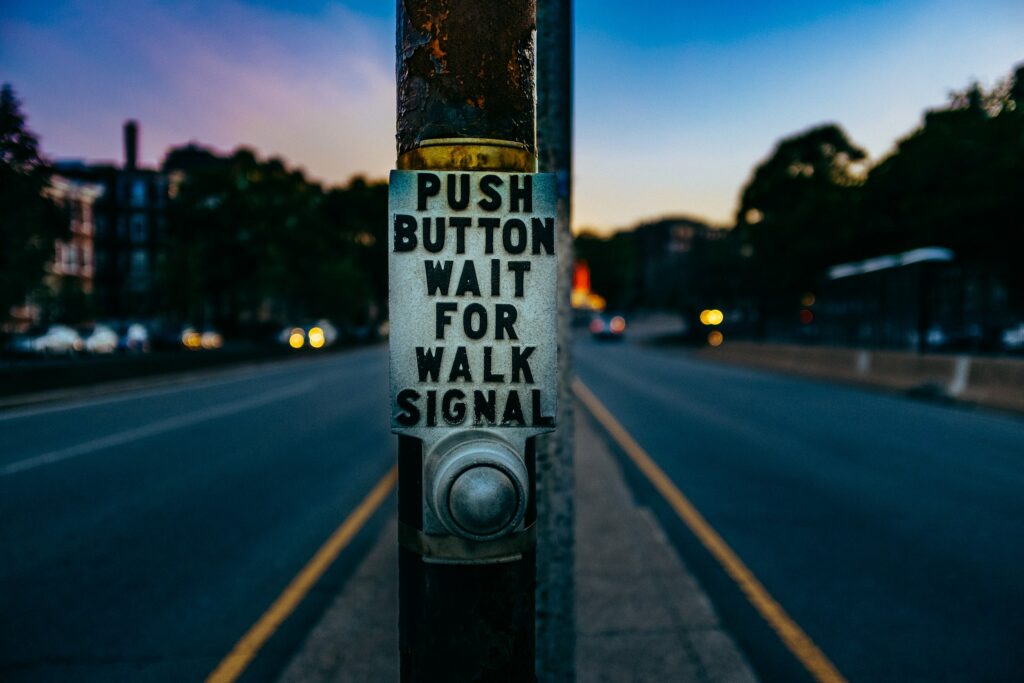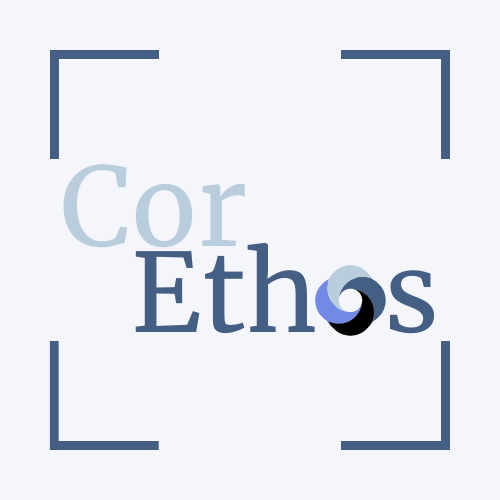The term ‘Call-to-Action' (CTA) is a familiar concept in digital marketing. It involves words and designs intended to compel a specific audience to follow through with an action. However, a new approach is gaining traction – the ‘Call-to-Benefit' or ‘Call-to-Value.' This strategy might distinguish between an instant purchase and an ‘I'll think about it later' response.
Understanding the Traditional Call-to-Action (CTA)
A Call-to-Action (CTA) is a marketing term that refers to a prompt that encourages the audience to take a specific action. CTAs are often encapsulated in phrases like ‘buy now', ‘book a free call', or ‘get in touch.' They are designed to stand out visually, often involving a different design element, like another color or a button.
Examples of Common Calls to Action:
- Sign up for our newsletter.
- Connect with us on social media.
- Download this free guide.
- Join our mailing list.
- Buy now
- Book a free consultation.

The Shift to Call-to-Benefit
While CTAs have their place in marketing, they can sometimes fall short when it comes to truly engaging the customer. This is where the concept of a ‘Call-to-Benefit' comes into play. Instead of merely prompting an action, a Call-to-Benefit emphasizes the value or benefit the customer will receive from the desired action. It's about turning a CTA into a value proposition that resonates with the customer on a deeper level.
Examples of call to benefits:
- Get your code for 50% off your next purchase here.
- Click here to learn how to get smoother skin for two weeks!
- Get our free guide to save yourself 22 hours next month!
- Subscribe here to access exclusive offers.
- Learn how to save time and money with our service.
Why a Call to Benefit is Important for Your Business
When it comes to running a successful business, a call to benefit is an essential tool for attracting and retaining customers. By clearly communicating the value and advantages of your products or services, you can effectively persuade potential customers to choose your business over the competition.
Highlighting the Value of Your Offerings
A call to benefit allows you to showcase the unique features and benefits of your products or services. By highlighting the value your offerings bring customers, you can differentiate your business from others in the market and position yourself as the best choice for potential buyers.
Benefits of a strong call to benefit include:
- Increased customer engagement
- Improved conversion rates
- Enhanced brand loyalty
Building Trust and Credibility
When you clearly communicate the benefits of your offerings, you build trust and credibility with your audience. Customers are more likely to make a purchase when they understand how your products or services will improve their lives or solve their problems. A strong call to benefit can help you connect with your target audience and show them that you understand their needs.
By incorporating a call to benefit into your marketing efforts, you can effectively convey the value of your offerings and persuade potential customers to take action.
Implementing Call-to-Benefit in Your Marketing Strategy
Understanding your customers ‘ needs and wants is the key to implementing a successful Call-to-Benefit strategy. What value does your product or service bring to them?
How does it solve their problems or enhance their lives? By focusing on these benefits, you can craft compelling messages that prompt action and build a stronger connection with your customers.
The Distinction Between Call-to-Action and Call-to-Benefit
While a Call-to-Action (CTA) is a visual element that entices a visitor to complete an action, a Call-to-Benefit, also known as a Call-to-Value, is a CTA that contains a value proposition. This provides the site visitor with more context to inform their decision. For instance, a button that says “Explore New Breed’s portfolio” explains what action the user should take and what they’ll gain from it.
The Importance of Context in Your Calls-to-Action
A strong verb alone isn’t enough to compel a reader to take action — users need to understand what the action is and why it’s valuable. The inclusion of that “why” is what separates a call-to-value from a call-to-action. This shift towards providing more context in your CTAs can improve the scanning experience on your website because the most visually attractive element on the page offers more relevant information.

How to Craft a Compelling Call-to-Benefit
Creating a compelling Call-to-Benefit (CTB) requires a deep understanding of your audience, a clear articulation of your product or service's unique value, and the use of persuasive language. Here are some steps to guide you through the process:
1. Understand Your Audience
Before you can craft an effective CTB, you need to know who you're speaking to. Conduct market research to understand your target audience's needs, wants, and pain points.
- What are their goals?
- What challenges are they facing?
- What motivates them to take action?
Key considerations include:
- Conducting market research
- Creating buyer personas
- Identifying common challenges or aspirations
The more you know about your audience, the better you tailor your CTB to resonate with them.
2. Highlight the Unique Value of Your Product or Service
Your CTB should clearly communicate the unique value that your product or service provides. This is more than just listing features or benefits; it's about showing how your offering solves a problem or fulfills a need for your audience. Be specific and concrete in describing this value.
For example, instead of saying, “Our software saves you time,” you could say, “Our software automates your data entry tasks, freeing up 10 hours a week for you to focus on more strategic work.”
Key points to consider:
- What makes your offerings unique?
- How do these unique aspects benefit your customers?
- What problems do your offerings solve?
You can effectively communicate the advantages of choosing your business by highlighting these unique value propositions.
3. Conduct In-Depth Customer Research
Prioritize comprehensive research to gain insights into your target audience's challenges, aspirations, and preferences. By understanding their motivations and pain points, you can tailor your call to benefit to address their specific needs directly.
Key steps to consider:
- Utilize surveys, interviews, and feedback to gather customer insights
- Analyze purchasing behavior and patterns to identify common needs and desires
- Develop customer personas to understand the diverse segments of your audience better.
Once you clearly understand your customers' needs, emphasize the benefits of your offerings that directly align with their requirements. Whether it's time-saving features, cost-effective solutions, or performance enhancements, highlighting relevant benefits can significantly increase the appeal of your call to benefit.
Consider the following strategies:
- Customize your messaging to address specific pain points or desires identified in your research
- Utilize language and terminology that resonates with your target audience
- Showcase how your offerings fulfill the unmet needs or desires of your customers.
By connecting the benefits of your products or services to the genuine needs of your customers, you can create a call to benefit that speaks directly to their motivations and drives action.
4. Focus on Solutions, Not Just Features
Instead of solely listing the features of your offerings, focus on how these features directly address the needs and desires of your target audience. By framing your call to benefit in terms of solutions to specific problems or enhancements to their lives, you can create a more compelling message that resonates with potential customers.
Key points to consider:
- How does each feature translate into a tangible benefit for the customer?
- What pain points or challenges does each feature alleviate?
- How will the customer's life be improved by utilizing these features?
5. Use Concrete Examples and Testimonials
Support your call to benefit with real-life examples and testimonials that illustrate the positive impact of your offerings. Whether through case studies, success stories, or customer reviews, providing concrete evidence of the benefits can significantly enhance your call to benefit credibility and persuasiveness.
Key considerations include:
- Collecting and showcasing customer success stories
- Utilizing before-and-after scenarios to demonstrate the transformative effects of your offerings
- Highlighting specific benefits experienced by satisfied customers
6. Test and Refine Your CTB
Finally, remember that crafting a compelling CTB is an iterative process. Test different CTB versions to see which resonates most with your audience and drives the desired action. Use A/B testing to compare different CTBs and refine your messaging based on the results.
By following these steps, you can craft a compelling Call-to-Benefit that prompts your audience to take action and communicates the unique value they'll receive.

Quick tips to improve conversion rates from a pro
If you're implementing a call to benefit on your landing page, here are some tips to help you maximize its effectiveness:
- Use visual cues like arrows or buttons to draw attention to the CTA.
- Ensure the CTA button is prominent and stands out from other elements on the page.
- Keep it simple – focus on one action, not multiple actions.
- Use persuasive language that evokes emotion and encourages users to take action.
- Use action words in your CTB to encourage action.
- Hyper-personalize your message to make it more relevant to the reader.
- Highlight how your product or service solves a problem for the reader.
- Utilize A/B testing to refine your messaging over time.
It's best to imagine yourself as a customer when crafting your CTB and ask yourself: would this prompt me to take action? If the answer is yes, then you're on the right track.
Utilizing the concept of call-to-benefit in your marketing strategy, you can create a value proposition that resonates with customers on a deeper level, prompting them to take desired actions and ultimately improve.
Now that you understand what a Call-to-Benefit is…
It's time to put what you've learned into action.
Start by researching your target audience and identifying their unique needs and wants. Then, craft a CTB that clearly communicates the value of your product or service to them. Finally, use persuasive language and visuals to draw attention to the CTA and encourage users to take action.
With a bit of practice and experimentation, you can create an effective Call-to-Benefit that will help boost your conversion rates. Good luck!
Discover the power of transitioning from a traditional Call-to-Action to a more customer-centric Call-to-Benefit strategy. Learn how to craft compelling CTBs that resonate with your audience and drive conversions.
Explore the Path to Success with CorEthos
Thank you for journeying with us through this exploration of ideas. Your presence here is a testament to a shared passion for reimagining business, and it resonates with the very essence of CorEthos: bringing humanity back to business.
Perhaps the curiosity that brought you here still burns brightly, yearning for further discovery. In that case, we invite you to delve into our blog, where each article opens new doors to understanding, insight, and growth. They are tailored to leaders like you, eager to unravel the complex tapestry of today's business world.
If you find yourself intrigued by the delicate science behind communication and leadership, why not embark on a journey of discovery with our newsletter? Subscribing is like opening a treasure chest filled with wisdom that connects you to the essence of collaboration and community.
Intensify Your Leadership Journey with Our Mastermind Program
Our newly launched Mastermind Program provides a focused setting for tackling challenges like honing effectiveness, inspiring your team, and mastering the art of delegation. It's a unique space where business acumen meets human-centered values, delivered with the same quality and integrity you've come to expect from CorEthos. Ready to dive deeper into your leadership potential?
We Would Love to Get to Know Your Challenges Better!
Challenges in business? We see them not as stumbling blocks but as opportunities for transformation. Your unique path awaits, and it begins with a complimentary consultation with CorEthos. We'll build bridges over obstacles and forge a trail to success, leveraging our three foundational pillars.
Your adventure with CorEthos doesn't have to end here. Let's continue to build, learn, and grow together, reflecting on what makes your business uniquely human. We are here to be your compass, guiding you through the challenges and celebrating the triumphs. Let's begin this exciting journey today.



